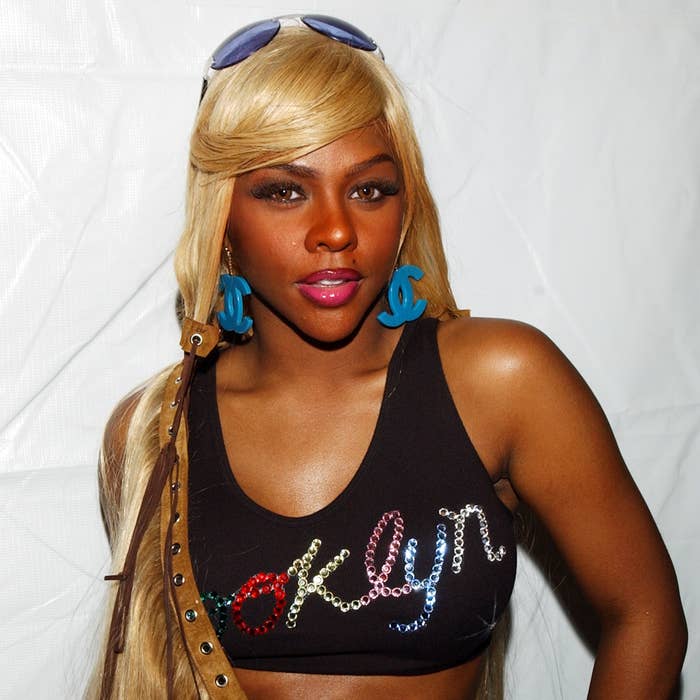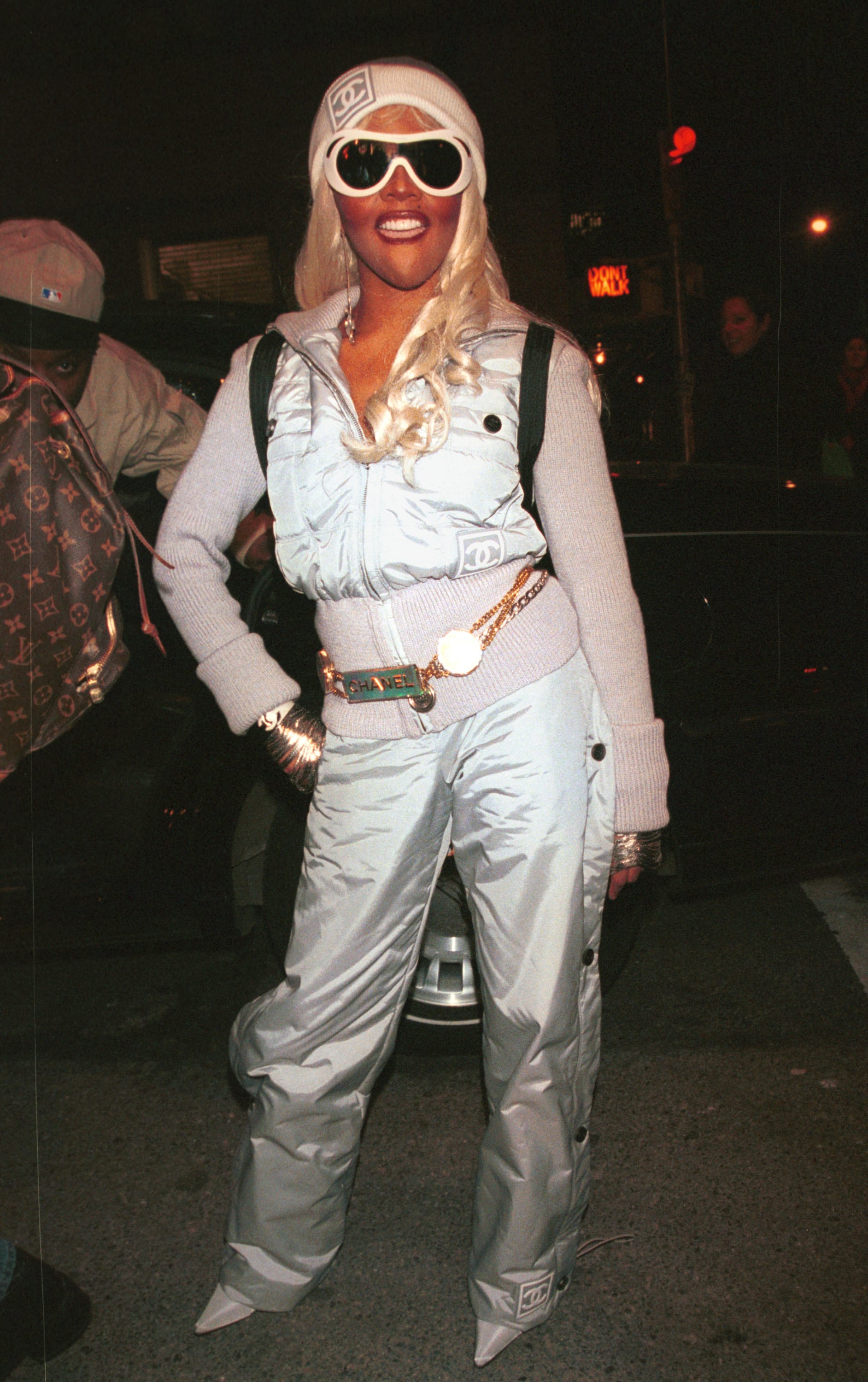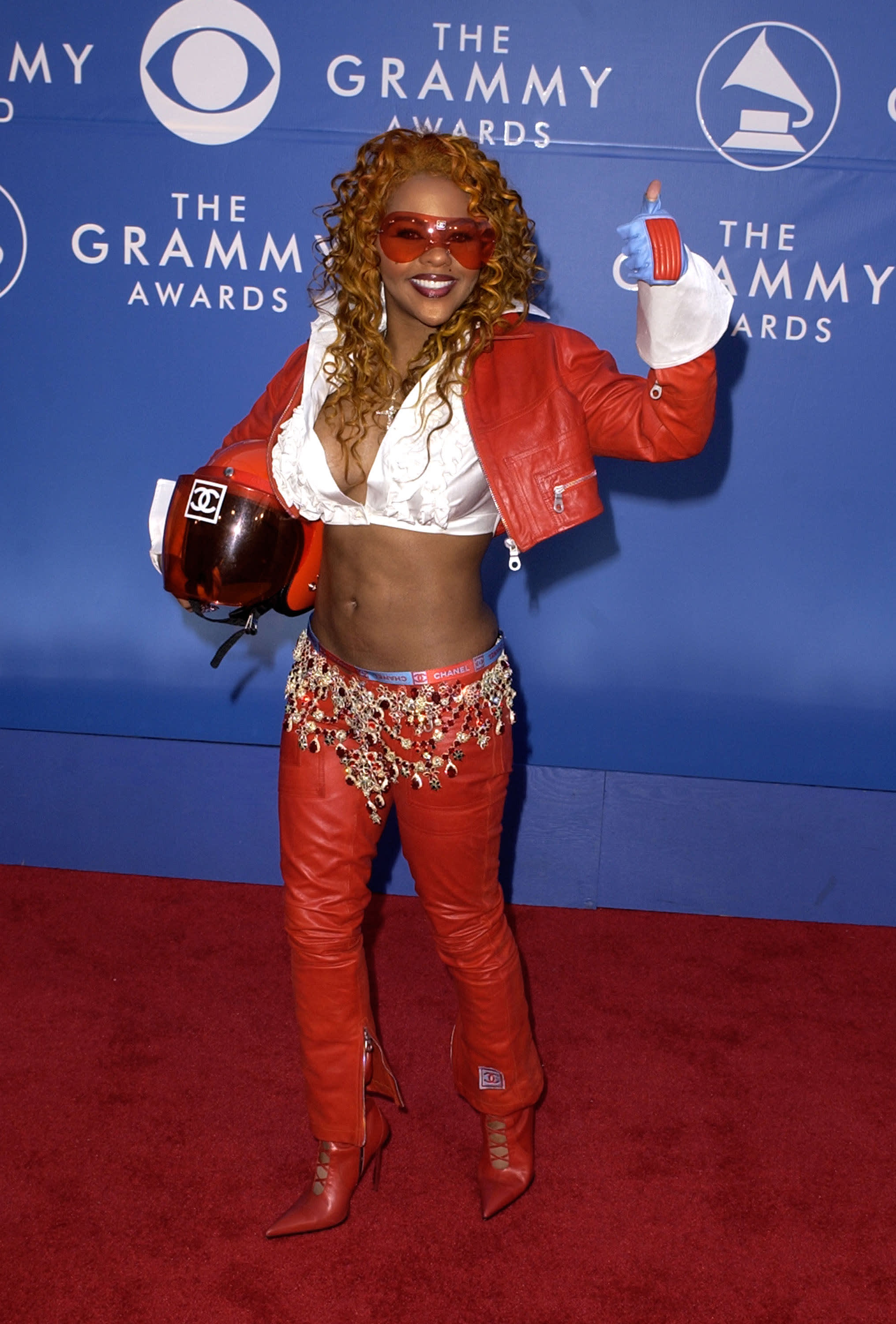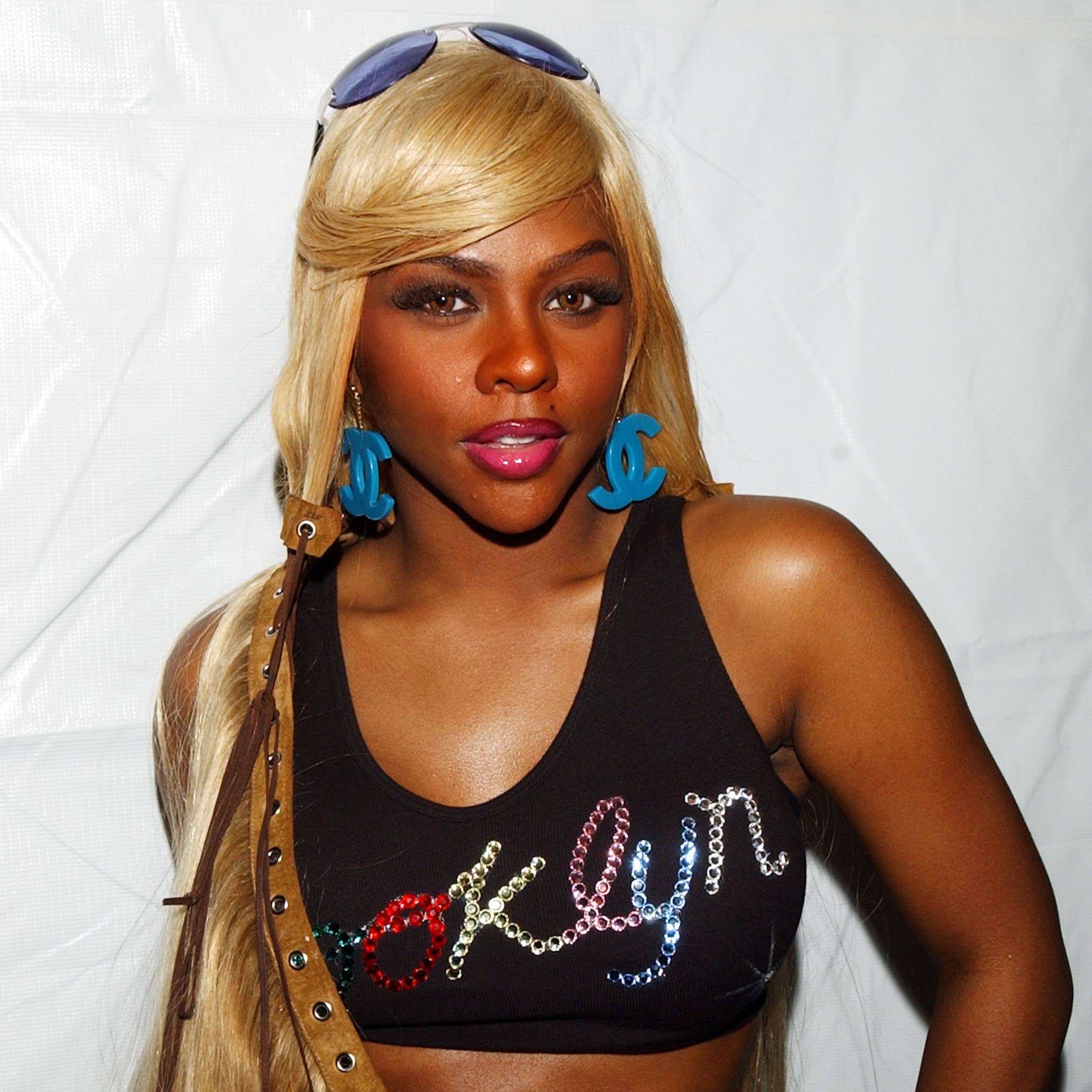
Lil' Kim introduced me to Chanel. My grandmother didn't wear it. My mother didn't wear it. But Lil' Kim did. I’m not sure when I originally noticed her donning something with the double Cs, but she was my first filter for the French luxury brand, founded by Gabrielle "Coco" Chanel in 1910.
When Kim started adorning herself in Chanel, it was the 90s when Karl Lagerfeld was the brand's creative director. He joined in 1983 and was tasked with bringing new energy to a line that was intended for debutants and socialites.
Lagerfeld designed collections in concert with what was happening in the world, and Kim—maybe unbeknownst to Karl—was a reflection of that world. She was a symbol of powerful femininity and showed how hip-hop could lend brands a specific cachet they couldn't get on their own—whether they wanted it or not. Only a few years before Kim’s first album, Hard Core, was released, Lagerfeld presented a collection influenced by hip-hop. Models wore oversized quilted baseball hats, gold nameplate necklaces, and sweatsuits dripping with pearls.
Upon Lagerfeld's death earlier this year, after he spent more than three decades as Chanel's creative director, I was reminded of his legacy, but I was also reminded that Chanel meant nothing to me until I saw Lil' Kim wearing a turquoise wig spray painted with the logo or the white, backless jumper she performed in with Biggie.
Kim created many of these looks with Misa Hylton, her famed stylist, who unintentionally built a blueprint for how many black female artists present themselves to the world—Beyoncé emphasized that when she recreated Kim's looks for Halloween in 2017. Over the years, Hylton has styled artists including Mary J. Blige, Missy Elliott, and Sean "Diddy" Combs, who she shares a child with.
"We weren't thinking! We were just doing," said Hylton when asked about working with Kim. "When you saw us wearing things, they were our own. There was no such thing as pulls and studio services that we’re able to do now."
Here, Hylton discusses the stories behind Kim's Chanel outfits, her and Kim's relationship with the brand, and what she thinks about the design mistakes luxury brands are making.
(This interview has been edited and condensed for clarity.)
How did you start working with Lil' Kim?
Biggie Smalls started a label with his friend Lance "Un" Rivera, and it was Undeas, and Junior M.A.F.I.A. was signed to the label. At that point, I had a lot of success with Mary J. Blige, and it was sort of like we were in the same family. They became extended family, so naturally, when it was time to come up with an image for Kim, Big and Un thought of me.
What were your initial thoughts about what her image should be?
I thought that she was a dope lyricist, and I didn't have any preconceived ideas about what she should be. I don't style from that place. I style from a place of connecting with the client, finding out what the goals are from the label and management, but really connecting with her, artist to artist. Then, from that point, the ideas just flow for me. It's always a co-creation.
How did you all agree on her wearing so much Chanel? Was Kim a big fan of it? Were you a big fan of it?
Kim was a huge fan of Chanel. I had achieved success and my finances had changed a big deal, so I was able to afford Chanel, and at that time the Chanel sneakers were hot and the chain belts. Even the drawstring Chanel bags. So we both loved Chanel just in our personal lives. I think a big part of our styling was being authentic to who we were as women and then elevating that. So that's what you see—a sense of both of our styles, naturally elevated.
What did you like about the brand?
What I loved about Chanel was the edge. It was edgy but feminine—like powerful femininity. They were statement pieces. And, then again, you can't leave out the fact that it says “luxury.”
What was the relationship with the brand? Were you all buying these things from the store? Did you build a relationship with Karl?
We would buy our own pieces. And Chanel was a lot less expensive back then, by the way. A hell of a lot less expensive. I feel like a drawstring bag was like $1,500, which is the price of a nice shoe now. Now they're, like, what, five to seven thousand? I mean, back then, $1,500 probably felt like $5,000.
Did you ever work with the brand directly?
No. I've done pulls through the showroom, but I've never worked [with] the brand directly.
Did you try to?
No. At that stage, we were really young, so we bought everything. We wanted it, we bought it. And we would use it. And in those early days, because we didn't have those relationships, we used a lot of our own wardrobe. But we were dressing like this on the daily. We were like, "We're true fashion girls." When it was time to do a music video, Kim would bring along her belts, I'd bring all my shoes. I would bring my fur, she would bring her fur. Un would bring his wife's jewelry. That's how we made it happen. It was all very authentic, and all those pieces were our own. When you saw us wearing things, they were our own. There was no such thing as pulls and studio services that we're able to do now. Those weren't options for us in the beginning.
You talked about wanting to be authentic to your personal style but feel elevated. Were there any other goals that you had in mind? Were you thinking about representing for black women who were from certain areas?
No. We weren't thinking! We were just doing. It's so different from today, right? I think that's why the 90s is the golden era and it stands out so much, because it was authenticity at its finest. We were happy with the opportunity and the freedom to be who we were in real life in front of the camera. Because back then, there was a pressure to clean up, to be more classic. If you entered certain rooms, you had to tone down. We were unapologetic about our style, and with the rise of hip-hop, R&B with Mary, and the whole success of Bad Boy, it was really a perfect storm. There was just a lot of energy. It was music, fashion, youth culture, hip-hop culture, African-American culture. Young people who drive the market where seeing themselves on TV.

How do think Lil' Kim impacted how other people interpreted Chanel? Did you see more women interested in the brand after seeing her wearing it?
I definitely believe she influenced our culture and outside of our culture. I believe that our interpretation of Chanel and the way that we styled it and put it together influenced even Chanel. I noticed more of a hip-hop edge. Chanel was always classic, and as the years went on, it became increasingly edgy. To me, it leaned more toward hip-hop culture as it grew. They always had their classic pieces and the pearls and stuff, but even the pearls became edgy. But not to take away anything from Karl, because he's amazing. He’s a genius and he’s tapped into what’s hot, so why wouldn’t he be attracted to hip-hop culture?
Did the luxury world embrace Kim?
I would say a year into her first album, we had access to everything. After the "Cursh on You" video. Because she crossed over to MTV, which was huge to be a female rapper.
Why do you think some of these Chanel looks are so iconic? What makes Beyoncé want to recreate the Chanel looks that you and Kim created?
I think it's like a perfect marriage of color, luxury, urban, and then Kim, she's just amazing herself. Her artistry, her rapping style—she’s so powerful. I think all of those things play a part. She was authentic to who she was. I know I’ve used that word so many times, but it’s real, and it’s needed now.
Yes! It is.
Now you see a lot of cookie-cutter looks. Or everyone is buying the same stuff. No one did that then. If Kim had that boot, Mary might buy it, but she was going to wear it differently. Everyone had their own unique sense of style. It was about being unique and doing things that stand apart. Kim didn't go with the flow of what everyone else is doing, and she was unapologetic. She didn't feel like she had to. It was just a different time. There was a lot of room to breathe and to create. We didn't feel the pressures of social media. So even if you weren’t dressed like Lil' Kim, you were still looking at her because it was enjoyable. All good art is.
You mentioned social media. Why do you think artists and stylists don't have the space to do that today?
Because as soon as they post something, they check to see how many likes it gets or the negative comments. It might be somebody who is 11 years old behind a computer! You don't even know who it is, and now you might second-guess yourself or you may question what you're creating. So, for us, we really had that time to marinate and get in our bag and then give it to the world. No one bought colored hair then. I had close friends that were like, “Oh my God, that looks like a clown! You don’t wear colored hair that matches your clothes!” Some loved it, but it [wasn't their style].They didn't understand it. They didn't get it. Imagine if we posted an idea and got that and thought, “No, we shouldn’t do it.” The whole culture would be different.
Let's talk about some stories behind certain Chanel looks. What about the outfit Kim wore on the set of Missy's "I Can't Stand the Rain" video. With the Chanel suspenders.
Oh, yeah. You know what? Actually, that look, those were Kim's own clothes. She just showed up dressed. I may have bought them, but I wasn't there on the set. That was like, come, show up, get dressed, come through.

What about for the Grammys, when she had the Chanel bike helmet?
Again, she bought that. She would call me, and she would be like, "Mimi, I just got this dope Chanel shoe. This is what I want to wear." Or she'd tell me she got the ski suit, and asked what I thought. We were young and, like I said, really edgy, so we would love to show up like that. I'm telling you, we didn't do any pulls. If we had it on, we owned it. You ever hear about the budgets we had in the 90s?
What do you think about some of the recent missteps from Gucci, Burberry, and Moncler?
These challenges we face provide the platform and the opportunity to educate. I tend to look at things on the bright side. We already know things are offensive and they hurt and there isn't enough diversity. I feel like, through these opportunities, we get to fix that because now we are able to hold companies accountable, and they aren't able to get away with it in the same way they have in the past. If these things did not happen, we wouldn’t have the opportunity to educate, and these things could continue to happen behind closed doors. When you have opportunities to heal, you take them.


